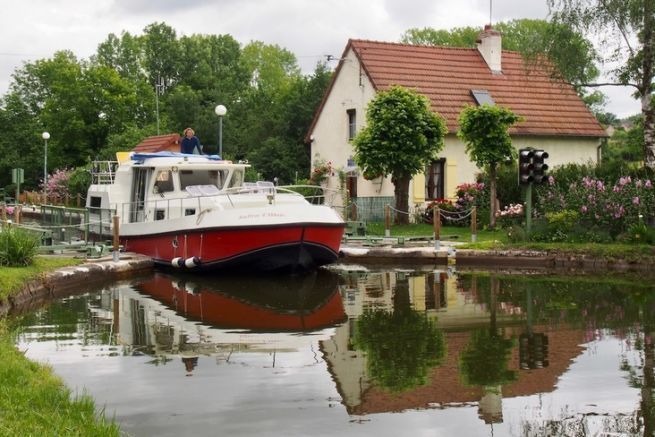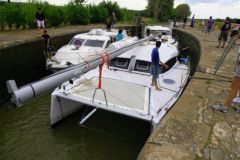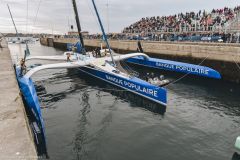Sluice locks were built on waterways to allow boats to cross a slope, whether it be the drop created by a weir or the slope that would otherwise affect a canal. The principle is ancient, but Leonardo da Vinci gave it its current form of a lock closed by two arched doors to better resist the pressure of water.
An airlock between high and low
A lock is thus composed of a masonry basin, the sas which is closed at the upstream and downstream ends by a pair of doors busked the point is turned upstream, so that the pressure of the water tends to keep them firmly pressed against each other. The point is turned upstream, so that the pressure of the water tends to keep them firmly pressed against each other.
A system of valves or vantels allows the lock to be filled or emptied. In most cases, these are simple hatches in the gate that the lock keeper opens with a jack. This causes a lot of backwater, which is why the larger locks have valves that fill them from the bottom.
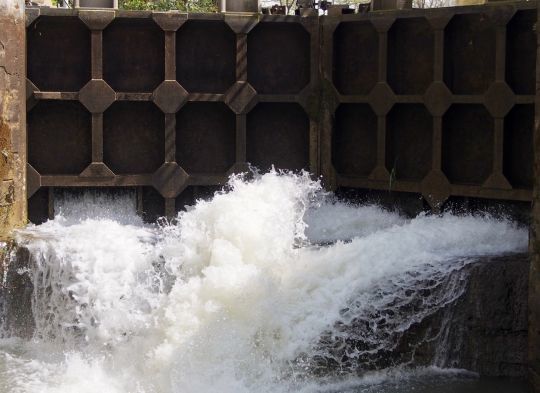
The pressure is balanced with the level
In order for a boat to pass through the lock, the level in the lock chamber must first be the same as the level in the reach from where it arrives. Thus, it is possible to open the doors that are not under pressure. The boat enters the basin and the doors are closed. By opening the opposite gates, the level of the lock chamber is varied. When the level is the same as that of the destination reach, we can open the gates and let the boat out. It is important to give the level on both sides of the gates time to equilibrate before attempting to open them: in a 40 x 5 meter lock, a centimeter difference in level represents a thrust of two tons!
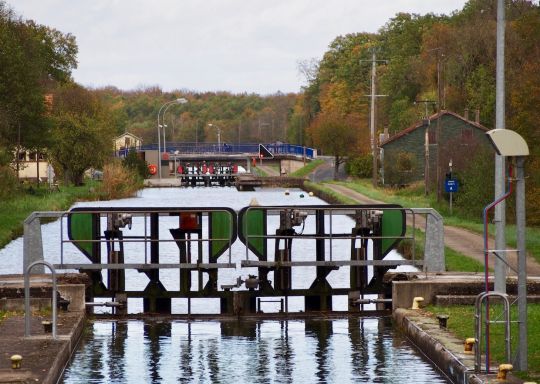
Upstream
To pass through an ascending lock, the boat enters when the lock chamber is empty. It enters slowly and passes its moorings around the bollards, on the side where the lock keeper or the control terminal is located. The height of the bays, side walls of the lock, makes this not always an easy exercise. The mooring lines are held by hand to adjust their tension as the level changes. The lock keeper closes the downstream doors and opens the upstream sluices to start filling the lock chamber. At the beginning, the backwater is strong, but everything calms down when the gate openings are covered with water. The lock keeper opens the gates, then closes the sluices again while the boat continues on its way.
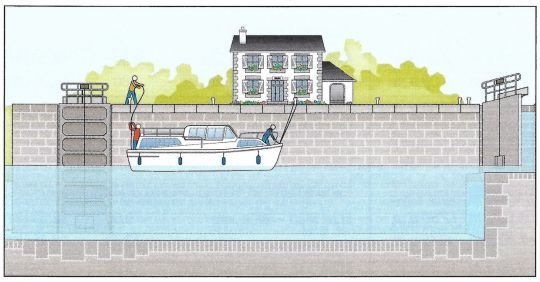
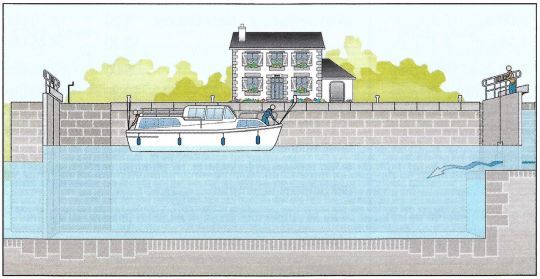
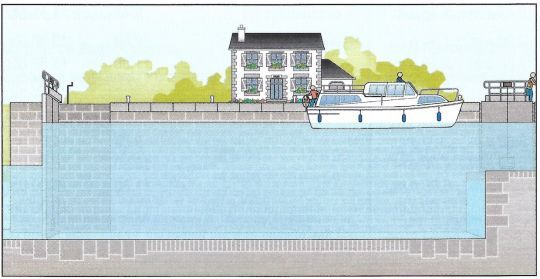
Downstream
In the case of a downstream lock, the principle is the same, except that the lock chamber is full and it is much easier to pass the mooring lines. On the other hand, it is absolutely imperative not to tie them up so that the boat does not remain suspended. Also beware of knots or cracks in the masonry that could prevent a rope from running. In this sense, the basin empties and therefore the boat does not suffer from eddies. Locks are considered much more comfortable to pass through when you are downstream.
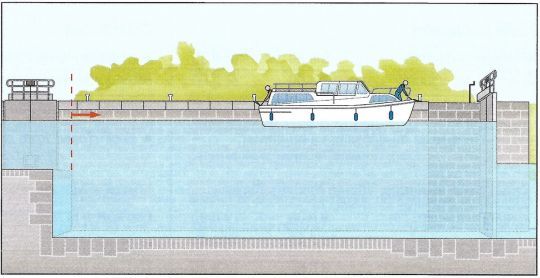
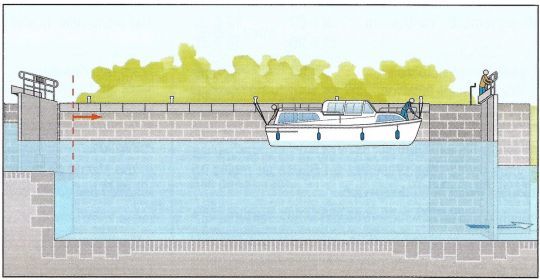
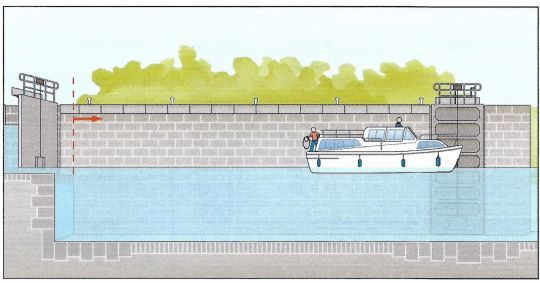
Grouping boats to save water
Each maneuver releases a volume of water equal to that of the lock downstream, which is far from trivial in times of drought or lack of water. This is one of the reasons why pleasure boats are often grouped together. This is not a big constraint for boats that are heading in the same direction and that meet to pass through each lock together. In any case, it is more comfortable to stay behind the lock when ponded ! If you go upstream, you will avoid the main eddies, and if you go downstream, you will be less affected by the suction of the sluices. Similarly, if you are following an inexperienced crew, give them time to pass their mooring lines before entering in your turn. In any case, stay away from the doors so that no part of the boat risks getting under the structure.

The system described here is that of the traditional locks. There are others: round ones in the Midi, very large ones on the rivers, others are so deep that their downstream door is raised by a guillotine system under which one passes. However, all of them work on the same principle, inherited from the good Leonard.

 /
/ 